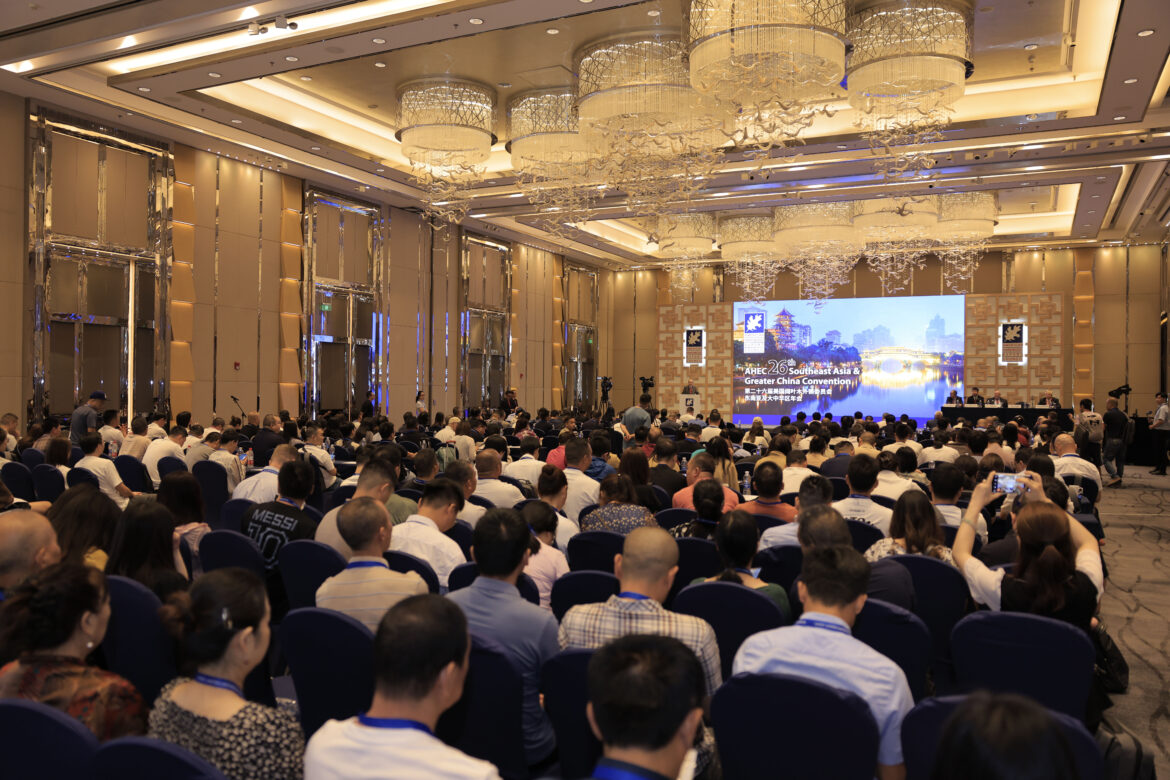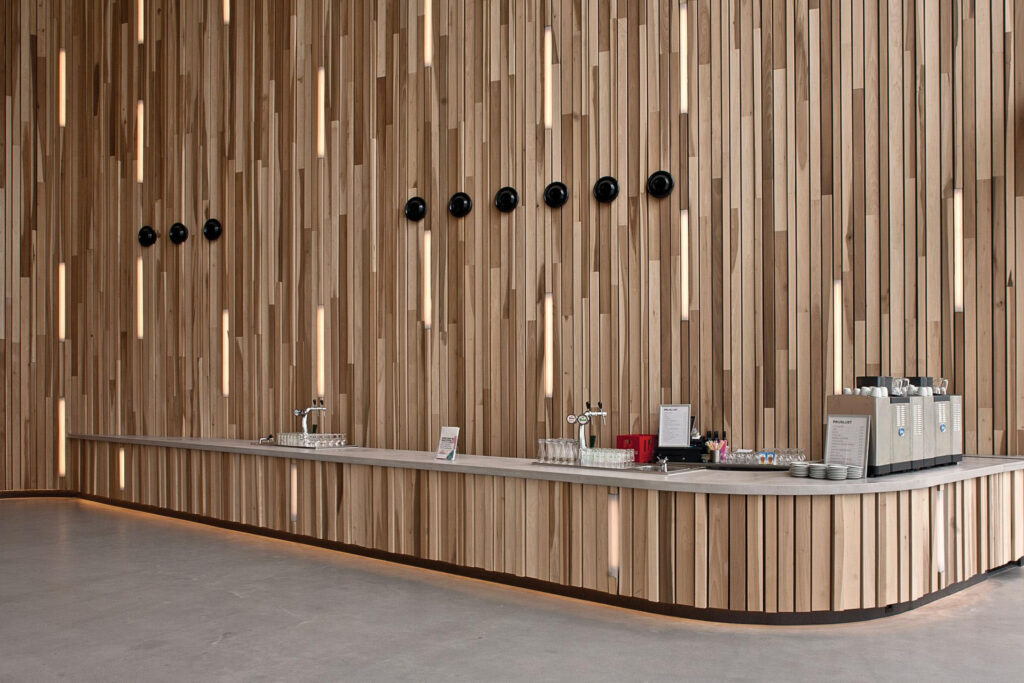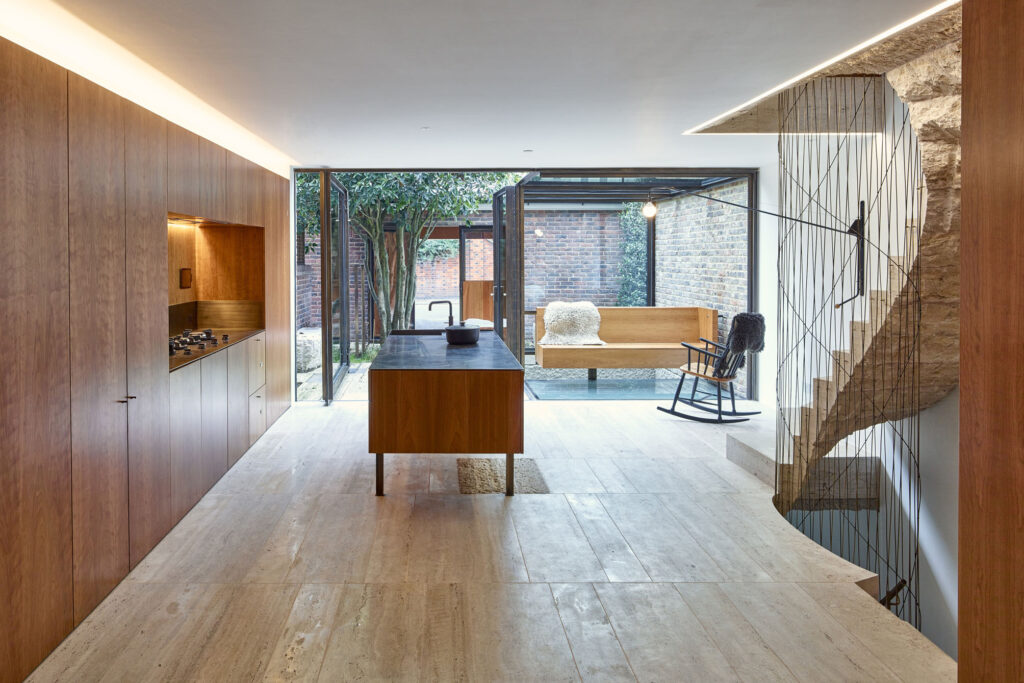Industry thought leaders attending the American Hardwood Export Council (AHEC) 26th Southeast Asia and Greater China Convention have outlined the role of wood in securing a sustainable future. Here’s what you need to know.

September 21st, 2023
The recent American Hardwood Export Council (AHEC) 26th Southeast Asia and Greater China Convention that was held on 8th September in Chengdu, China saw key opinion leaders from the wood industry coming together to expound on the significant role that American hardwood can play in sustainable development, and its immense potential for use in architecture and interior design. It also included a presentation on the technical aspects of timber grading rules and application.
The convention, which was held at JW Marriott Hotel Chengdu, was suitably themed “Sustainable American Hardwood – The Future of Our Living Environment”. It was supported by the Chengdu Furniture Chamber of Commerce, and was attended by close to 300 architects, interior designers, timber contractors, traders, importers, wholesalers across Greater China and Southeast Asia and over 20 AHEC member companies.

Given that China and the United States remain the world’s largest importer and exporter of hardwoods respectively, Michael Snow, Executive Director of AHEC stated in his presentation that both countries had “a joint responsibility to show leadership, particularly on environmental issues and climate change.”
In speaking on the environmental benefits of American hardwood, Snow raised a notable point: Approximately 80 per cent of all American hardwood forests are privately owned by individual family landowners who understand the value of the forest. There are more than 9 million of them, and they each have an average of less than 40 hectares, enabling them to better manage and monitor for activities such as illegal logging.
Along with that, the practice of selective harvesting and the promotion of new growth through natural regeneration means that nature itself decide what trees grow, which leads to a diversity of species that eventually come to market.

Just as significant, Snow highlighted that the American forest is a resource that is increasing in volume every year, and in fact, outstrips harvest. “The amount of standing timber in the United States hardwood forest has more than doubled in the last 60 years. One of the main reasons is our growth to removal ratio – for every tree that is removed from forestry operations, or that dies naturally, two and a half new trees are taking its place,” he said.
Taken as a whole, this situation is quite distinct from many forestry practices around the world.

Snow shared that AHEC has established various science-based methods to demonstrate and communicate the environmental impact of American hardwood. Among them is its Life Cycle Analysis (LCA), which measures the carbon footprint of each design from wood extraction to the delivery of the finished product.
Unlike many other materials, wood can have a negative carbon footprint because trees absorb CO2 during growth and store it in the product. In presenting three different scenarios of transporting Ash wood from America to China, Snow showed how even the most unlikely (lengthy) shipping route would still result in the lumbar arriving to its final destination as carbon negative. “There is more carbon stored in the wood than all the emissions involved in getting that wood to market anywhere around the world,” he stated.

Snow also demonstrated how AHEC’s interactive map offers useful information on the distribution, growth and removal for most of the main commercial American hardwood species, and importantly too, the regeneration rate. “A lot of times in speaking with architects, we get asked how many trees one had to cut down to make a particular building. The real question they are asking is how quickly those trees are being replaced in the forest. And this is what the map will tell you. If you are using American Red Oak for example, a cubic metre of that lumbar takes just over a half second to be renewed in the forest,” he said, adding that using such data along with LCA allowed stakeholders to start making more informed design and manufacturing decisions, with knowledge of their actual impact on the environment.

According to Snow, AHEC’s strategy of providing manufacturers and architects with “verifiable, accurate and useful information on American hardwood” has been one that it has had in place for years.
Perhaps one of the most important discussions at the convention were the technologies that have revolutionised the use of wood in design and architecture.
“Technology is now allowing us to use hardwood in ways that we were never able to before,” said Snow. “Right now, the biggest one with the most commercial potential is thermal modification, which allows the wood to be used in outdoor environments.” According to Snow, unlike previously where exterior projects would require the use of tropical hardwood or soft wood that is manufactured with a lot of chemicals, thermal modified American hardwood is chemical-free.

Along with that, Snow stated that mass timber construction offered the most exciting new uses of hardwood and wood in general. Besides the obvious advantage of its ability to sequester carbon, such projects can be prefabricated off site, be put up quicker and produce less wastage. “This has many advantages over our traditional use of concrete and steel, all of which use lots of energy, all of which use non-renewable materials,” said Snow. “So even if it costs a little more to build something out of mass timber, the fact that you can get it built that much quicker can offset a lot of that cost,” he added.

James Lu, Principal and Managing Director of Perkins&Will, who spoke on “Fighting climate change through biophilic design with wood”, said that everyone involved in the building industry had a huge responsibility and also opportunity to deal with the climate crisis, given especially that it is responsible for 40 per cent of the world’s total carbon emissions.

“So what is our industry doing about this now? Every firm has a different approach. At Perkins&Will, we have pledged to eliminate embodied carbon in every commercial interior project that we design by 2030,” said Lu. He also shared that in the next year, his firm would be forecasting carbon in every project they do and making the results available so the industry can learn from it.

On the topic of biophilic design, Lu highlighted its many benefits linked to health and wellness, and shared that wood was one of the firm’s favourite material when it came to discussing biophilia, providing advantages such as being a natural, renewable resource, being flexible and versatile, and having the ability to create excellent structures.

He went on to present four different projects done by the firm using timber, and how each uniquely addressed the idea of biophilic design and sustainability.
While new technologies present exciting opportunities for the wood industry going forward, Rupert Oliver, Consultant to AHEC for Sustainability Issues, explained that the EU Deforestation Regulation that was passed into law just recently, while holding certain merits, would pose a future challenge for those looking to place wood on the market in Europe. “It will require each consignment to provide the geolocation of the specific real estate property where the wood was harvested,” said Oliver.

He explained that this would be problematic when dealing with American hardwoods or any wood products coming from a fragmented supply chain of many small owners, that would have to be combined to add value to the products and to deliver in the quantities required by the EU consumer.
Despite this challenge, the advantages of wood as a natural, renewable and sustainable resource is doubtlessly one that the industry can get behind. As notable takeaways from the convention, the uniqueness of American hardwood forest management, and the technologies revolutionising timber construction are key considerations for a design community seeking ways to build a low-carbon future.
Photos courtesy of American Hardwood Export Council
We think you may also like How do we achieve the net zero target by 2040?
INDESIGN is on instagram
Follow @indesignlive
A searchable and comprehensive guide for specifying leading products and their suppliers
Keep up to date with the latest and greatest from our industry BFF's!

Rising above the new Sydney Metro Gadigal Station on Pitt Street, Investa’s Parkline Place is redefining the office property aesthetic.

For those who appreciate form as much as function, Gaggenau’s latest induction innovation delivers sculpted precision and effortless flexibility, disappearing seamlessly into the surface when not in use.

London-based design duo Raw Edges have joined forces with Established & Sons and Tongue & Groove to introduce Wall to Wall – a hand-stained, “living collection” that transforms parquet flooring into a canvas of colour, pattern, and possibility.

BLP’s new Sydney Children’s Hospital, Randwick building brings together paediatric care, family-centred design and Australia’s first Children’s Comprehensive Cancer Centre in a major addition to the Randwick Health & Innovation Precinct.

Eco Outdoor recently brought together developers, sustainability experts and local architects such as Adam Haddow to discuss design fundamentals, carbon targets and long-term thinking.
The internet never sleeps! Here's the stuff you might have missed

Indesign Media is aware of recent reports raising serious concerns about Australian architectural photographer Derek Swalwell.

We caught up with Abramo Manfrotto, CEO of Venetian decorative lighting brand LEUCOS, during a visit to Australia with dedece.